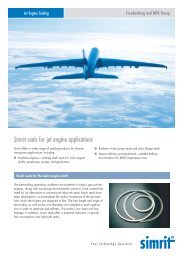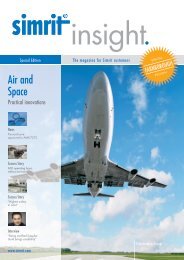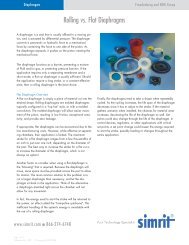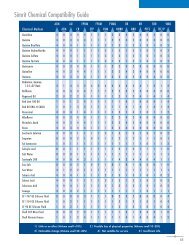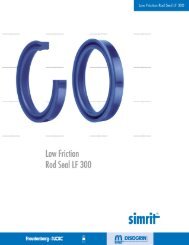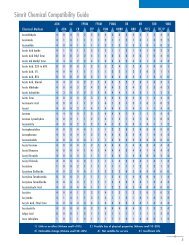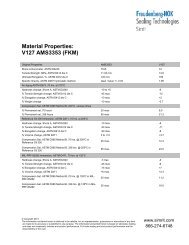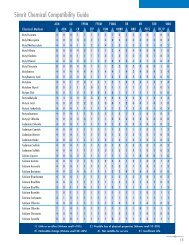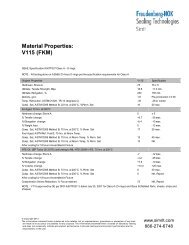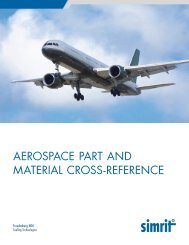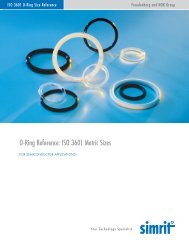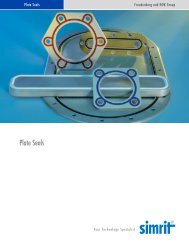Diaphragm Design Manual - Simrit
Diaphragm Design Manual - Simrit
Diaphragm Design Manual - Simrit
You also want an ePaper? Increase the reach of your titles
YUMPU automatically turns print PDFs into web optimized ePapers that Google loves.
Additional StylesThese same compression issues and solution approaches apply to all other forms ofhardware assembly such as crimped, swaged and spun metal parts as well as sonicwelded, glued or snap fit plastic parts.Please feel free to contact <strong>Simrit</strong>’s Engineering Group to discuss these and other methodsfor proper diaphragm capture in your assemblyTypical Assembly Challenges and Suggested Solutions1) Bending of the material in the flange between the bolts. Adding more bolts, thusreducing the distance between them, can usually make a correction. Increasing thethickness in the hardware flange material will also reduce the amount of distortion.2) Distortion of the flange material around the boltholes. Lightweight sheet-metaldesigns lend themselves to this type of distortion. This is usually caused by excessive forceapplied to the bolts. Lightening up on the bolt torque and / or increasing the thickness in thehardware flange material will help.3) Non-parallel Flanges (Cocking or Warpage). Often caused by uneven bolt loads. Bolttightening should be done sequentially, uniformly loading the flange prior to final tightening.Flange surfaces might require machining to bring them into parallel.Plastic housings and covers are very apt to exhibit warpage as a result of varying wallthicknesses.4) Surface Roughness. In most cases the commercial finishes should not present a sealingproblem. However, an exceptionally hard elastomer material might not conform to the roughsurface. One option to overcome this issue would be to heat the diaphragm under a heatlamp before assembly; enough to soften it so it will better conform to the flange surfaces.Sealing IssuesAnother option would be to use a gasket material in conjunction with the diaphragm.Gaskets and Gasket LaminationThere are types of diaphragms made from very thin coated fabric that incorporate a fibrousgasket material bonded to the flange for improved sealing.<strong>Simrit</strong> specializes in bonding or laminating gasket materials to diaphragms. Three advantages ofthis approach are:1) Improved sealing2) Improved assembly3) Inventory reduction for the customerA typical construction is shown in Figure 18. Gasket materials are available in Rubber,Cork/Rubber, Cork Composition, Cellulose/Rubber, and High Performance Fiber/Rubber.© Copyright FNGP 200938



